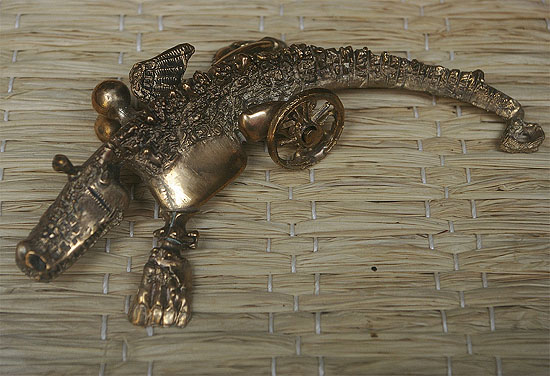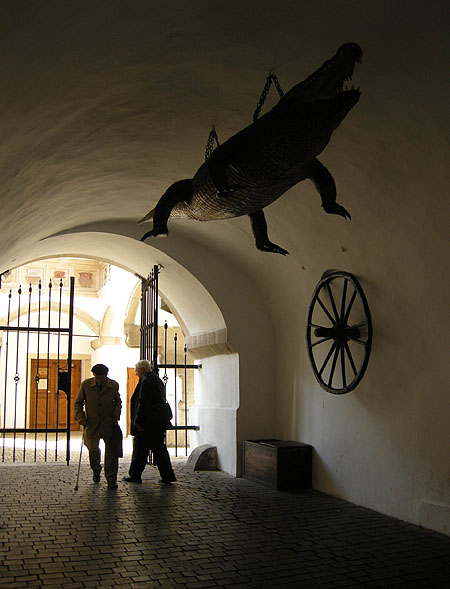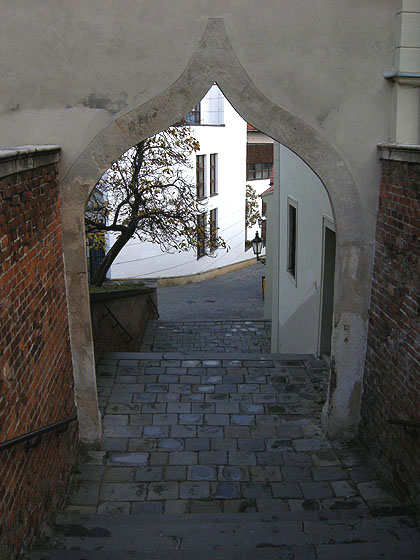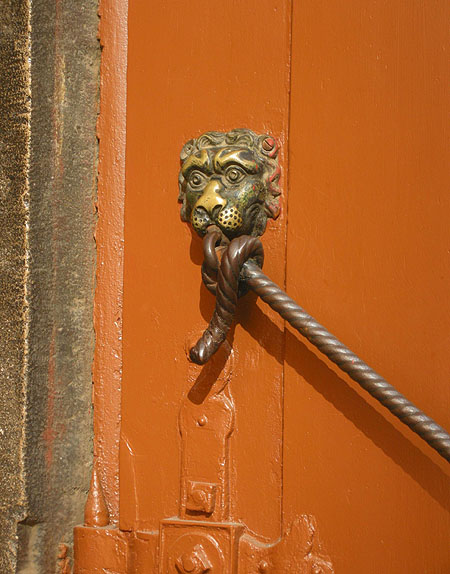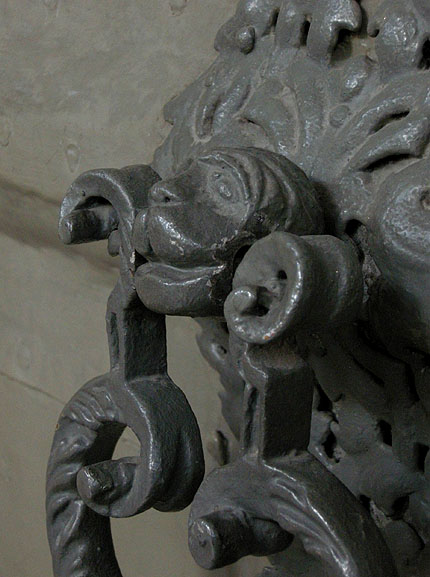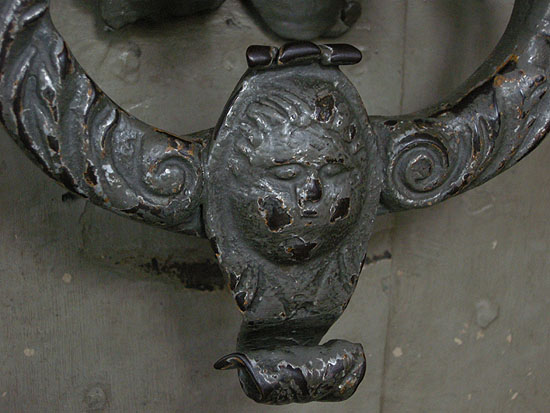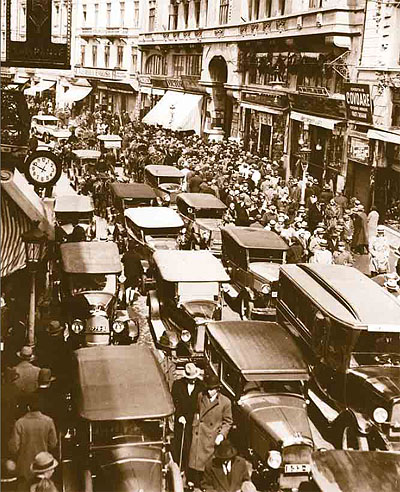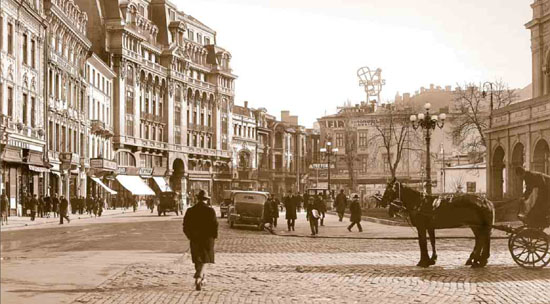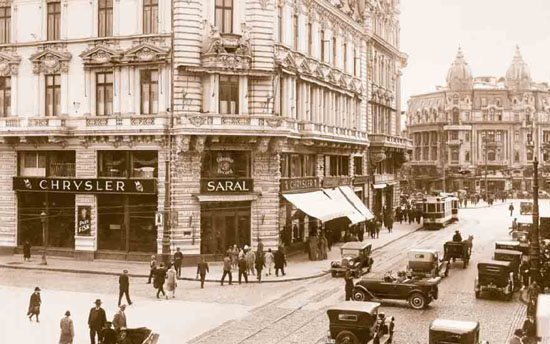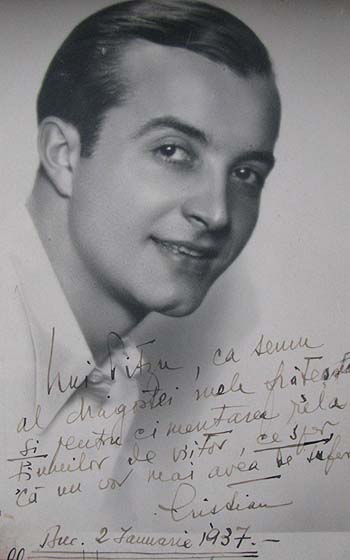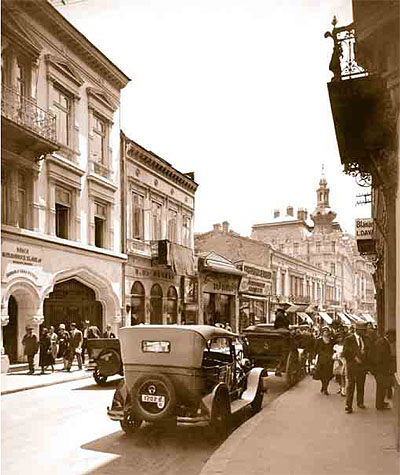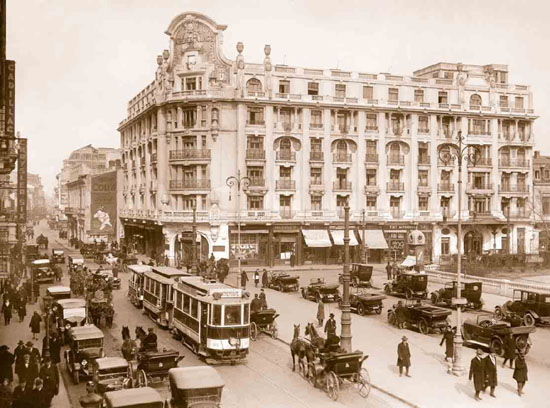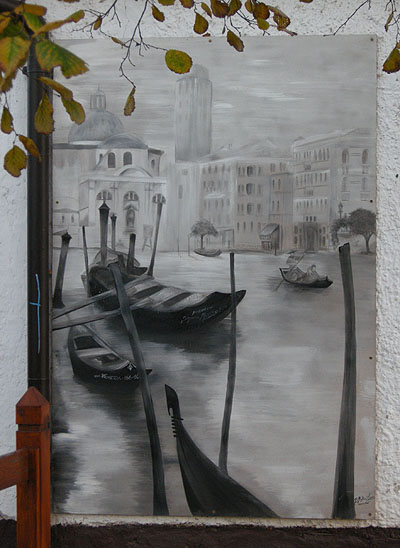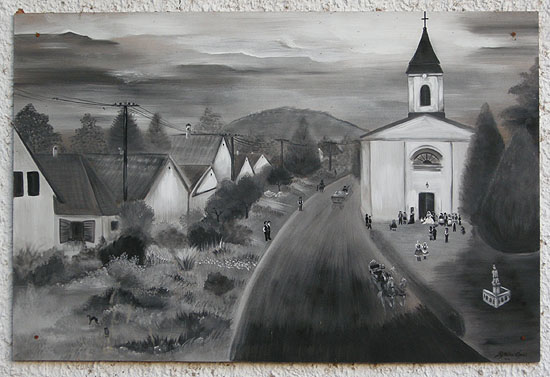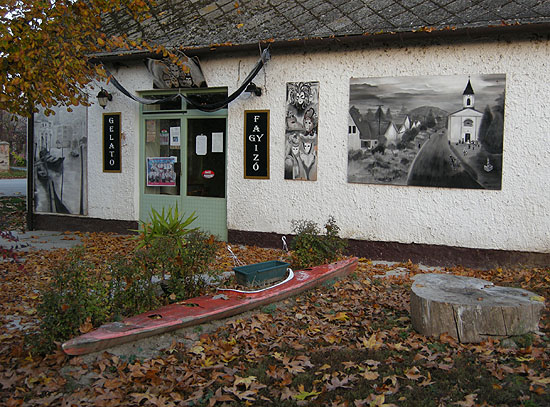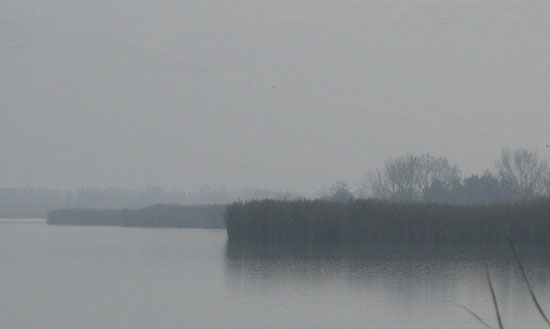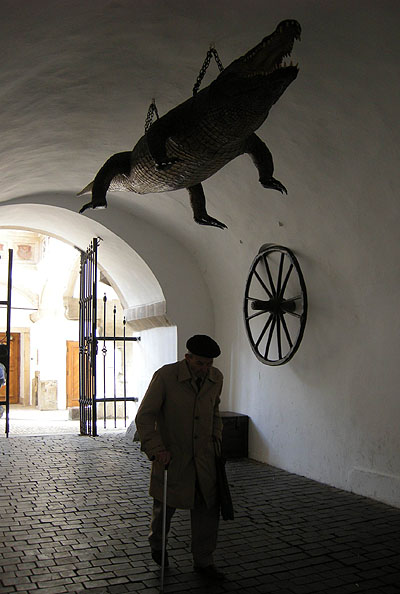
|
|
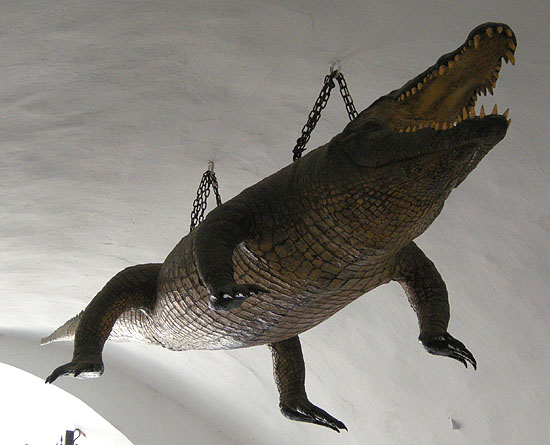
The dragon had come swimming on the river Svratka and terrorized the city by taking as prey the livestock and people coming down to the river. The city council offered a huge price for him who would kill it, but all who had attempted it perished. Finally a traveling journeyman won it by hiding a sack of unslaked lime in the body of a disembowelled ox and placing it on the river bank. The dragon devoured it, hide and hair, but when it retired to the river to digest, the lime began to boil in the water, and it was exploded in a thousand parts.
 The story of how it was pieced together by local artisans so that it could be hung up in the passage under the town hall’s clock tower as a warning to any further dragons passing by, must belong to the golden pages of the chronicle of Brno’s handicraft industry.
The story of how it was pieced together by local artisans so that it could be hung up in the passage under the town hall’s clock tower as a warning to any further dragons passing by, must belong to the golden pages of the chronicle of Brno’s handicraft industry.The talents of local artisans are also attested by the wheel on the wall of the same passage, which is not only a rustic decoration, but an important historical monument, and even a personality: it is the brněnské kolo, the wheel of Brno. It had been made in Lednice, some forty kilometers to Brno by wheelwright Jiří Birk for a bet in only twelve hours from the moment of chopping the tree to wheeling it in through the gate of Brno. He won the bet, but lost his clients, as from that time on he was considered to have made a pact with the devil. He died poverty-stricken.

This is the one version. Another is that the crocodile came to the town already stuffed in 1608. It was a gift of the Sultan to the Margrave of Brünn, who was none else than the younger brother of the alchymist emperor Rudolf, the later emperor Matthias. This is how the memorial table placed on the wall of the clock tower by the town council in 1749 announces it.
However, the council did not know enough the documents in their own archives. For these prove that the crocodile had been restored and cleansed of worms back in 1578-79. So it had to come to the city much earlier than that.
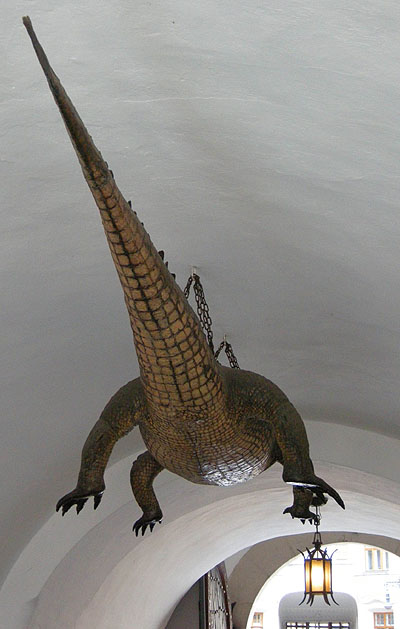
There is every indication that from the beginning of the 1500’s an unparalleled invasion of crocodiles showered upon Europe. As far as the sporadic sources permit to see, a terrible struggle unrolled between the natives and the intruders, and finally the latter were overcome. However, the trophies of some of them have been preserved in memory of the victory.
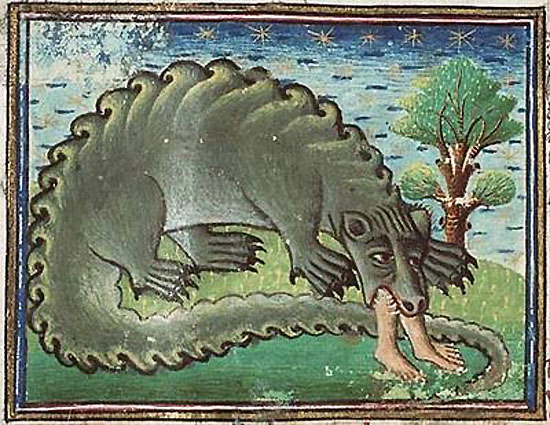
The most famous among them is undoubtedly the lagarto de la Malena, “the lizard of Malena” whose legend (!) was proposed by Spain just in the last year on the list of the “immaterial heritage of the world”. This dragon lived in a well in the Magdalena or Malena quarter of the southern Andalucian city of Jaén, taking as prey the people and sheep coming for water until a traveling journeyman did away with it. It is still debated how it was exactly killed. Some say that with the lime-stuffed bait prepared according to the Brno receipt, while the other party says that the winner completely covered himself with mirrors, thus blinding and then easily killing the beast. Its stuffed skin was preserved for a long time in the Church of San Ildefonso, but today it is only remembered by its statue set up at the well of Malena.
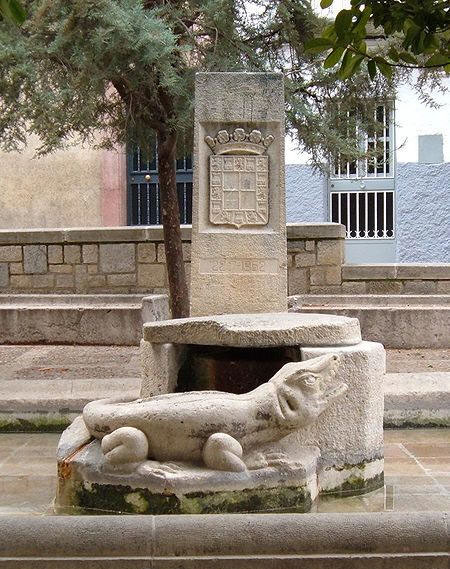
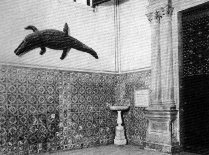 If the lime strategy came from Brünn, then the mirror tactics from Valencia. There a traveling Jew (!) killed in the same way the beast living in the river (which has dried up by today) and terrorizing the city. Its skin has been preserved on the wall of the atrium of the Collegio del Patriarca from which it has been called el dragón del Patriarca. What is more, its portrait was given a distinguished place in the decoration of the yearly Corpus Christi processions.
If the lime strategy came from Brünn, then the mirror tactics from Valencia. There a traveling Jew (!) killed in the same way the beast living in the river (which has dried up by today) and terrorizing the city. Its skin has been preserved on the wall of the atrium of the Collegio del Patriarca from which it has been called el dragón del Patriarca. What is more, its portrait was given a distinguished place in the decoration of the yearly Corpus Christi processions.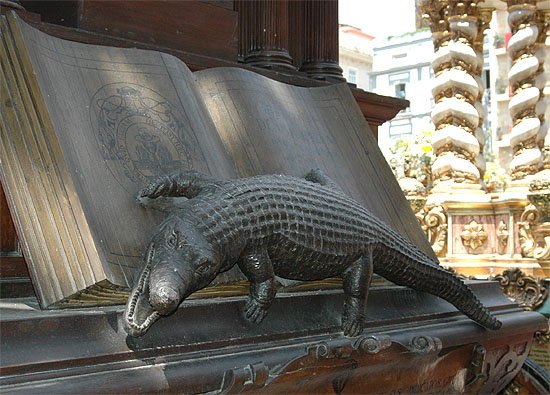
The skin of the lagarto de Calzadilla, the “lizard of Calzadilla” near to Cáceres has survived in the church of the Ermita del Cristo in very bad conditions. Its statue on the main square attests that it had devastated the flock until a shepherd did away with it. Unfortunately I could not clear how he did it, but the strange weapon in his hand refers to some new and cunning method.
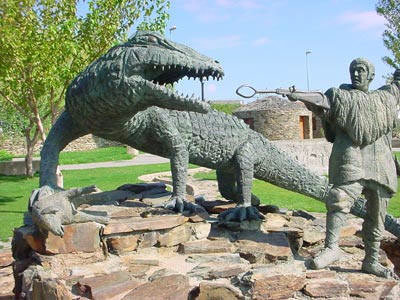
The first crocodile in Europe we know about is so old that even its skin has already perished and now only a wooden portrait is hanging on its place. Its living original was sent by the Sultan of Egypt in 1260, after the Spanish conquest of Andalusia to King Alfons X as a first attempt to establish diplomatic contacts, together with an elephant tusk, a living giraffe and other exotic treasures. It was hung in front of the gate of the Cathedral of Seville to which it gave the name of Puerta del Lagarto, “the Gate of the Lizard”.
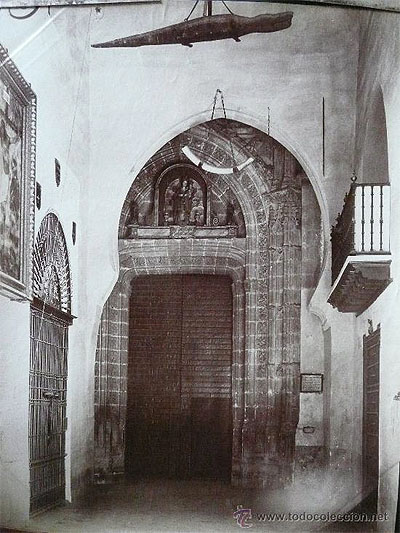
To Mallorca everything gets later. The crocodile invasion slapped the island only with its tail at the end of the 18th century. This beast lived
 in the alleys of Palma and took its prey in the night, mainly children from their cradles, at least according to the legend. Finally it was killed in 1776 by the Captain of Alcúdia, Bartomeu Coc who in that night was giving a serenade to his lady and immediately offered the crocodile to her as a token of his love. This gesture absolutely swept the lady off her feet, and she gave her hand without hesitation to the brave captain. This is how the deceased monster got the name of drac de na Coca, “the dragon of Mrs. Coc”. The trophy was preserved for long by her descendants, the Roselló family who exhibited it on ever 31 December. At the beginning of the 20th century they donated it to the Museu Diocesà where it is now on display. Its picture was published by one of our favorite daily readings, the excellent Mallorca Daily Photo Blog.
in the alleys of Palma and took its prey in the night, mainly children from their cradles, at least according to the legend. Finally it was killed in 1776 by the Captain of Alcúdia, Bartomeu Coc who in that night was giving a serenade to his lady and immediately offered the crocodile to her as a token of his love. This gesture absolutely swept the lady off her feet, and she gave her hand without hesitation to the brave captain. This is how the deceased monster got the name of drac de na Coca, “the dragon of Mrs. Coc”. The trophy was preserved for long by her descendants, the Roselló family who exhibited it on ever 31 December. At the beginning of the 20th century they donated it to the Museu Diocesà where it is now on display. Its picture was published by one of our favorite daily readings, the excellent Mallorca Daily Photo Blog.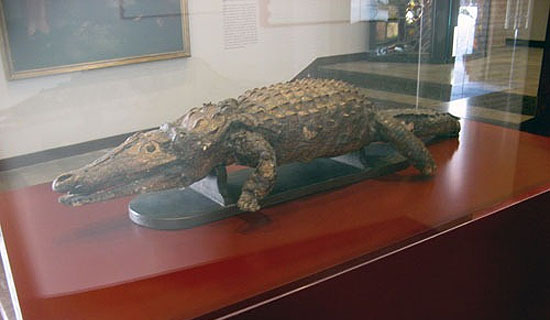
The heroic deed of Captain Coc also inspired a popular ballad, sung in the record below by the queen of the island’s folk music Maria del Mar Bonet.
Maria del Mar Bonet: El drac de na Coca (The dragon of Mrs. Coc). From the album Bon viatge faci la cadernera (1990).
| Pel carrer de Sa Portella, quan la nit cau, diuen que hi surt una bèstia; valga’ns Déu, val! S’engoleix les criatures valga’ns Déu, val! Les mares de Sa Portella ploren d’espant. Han dit que la nau d'un vell mercader que anava i venia de Mallorca a Alger, va dur d’un viatge un ou venturer. I va néixer el drac: feroç carnisser. Pel carrer de Sa Portella valga’ns Déu, val!, les nits fan olor de por, d’algues i sal. Bartomeu Coc, cavaller, jove i galant, diuen que arriba d’Alcúdia quan la nit cau. De nit ve d’Alcúdia, –galant cavaller–, per veure la dama: rosa de febrer. I allà ha de combatre enmig del carrer fins que en queda tros del drac carnisser. Pel carrer de Sa Portella, quan l’alba penja, la pluja esborra la sang color de menta. | In the alley of Sa Portella when the night falls they say, a dragon rises: Lord, have mercy on us! It devours the children: Lord, have mercy on us! The mothers in Sa Portella are crying in terror. They say that the ship of an old merchant that went here and there between Mallorca and Algiers brought on an occasion a strange egg: and a dragon was born of it, a bloody killer. In the alley of Sa Portella – Lord, have mercy on us! – the nights smell of alga and of salt and of terror. Bartomeu Coc, a young and brave knight, they say, came from Alcúdia when the night fell. He came from Alcúdia in the night that brave knigh, to see the lady of his heart the rose of February. And they went into battle there in the middle of the alley until at the end the bloody dragon was cut in pieces. In the alley of Sa Portella when the dawn rises the rain washes away the mint-colored blood |
But some crocodiles also appeared in countries where in lack of a sea they could have not come by themselves: for example in Switzerland or, indeed, in Bohemia. As their presence could not be explained away with natural reasons, thus their true story has survived more in detail, and it perhaps helps to understand that of the other crocodile trophies as well. In fact, these crocodiles had been taken home by pilgrims from the Holy Land and Egypt in the 15th and 16th century. Like for example the crocodile of Sankt-Gallen being restored on the picture below, which was brought by Ulrich Kromm from his pilgrimage in Egypt, and donated in 1623 to the library of the town.

Or the other Czech crocodile, the “dragon of Budyně”, brought alive from the Holy Land in 1522 by IV. Jan Zajíc z Hazmburka, that is John Rabbit of Rabbitburgh the Fourth.
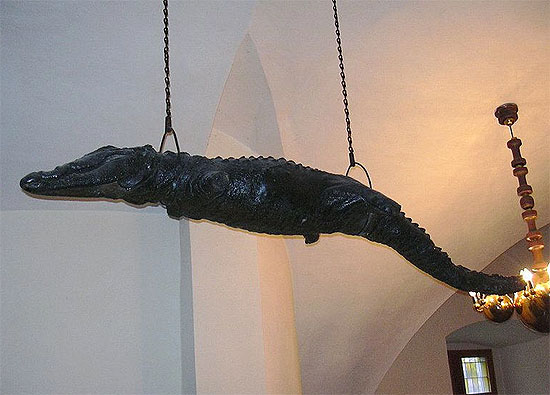
The crocodile lived in the moat of the renaissance Budyňe castle of the von Rabbitburgh family until he died, and Jan IV loved to show up with it on festive occasions in the posture of a dragon-killer. This is how he had his portrait painted in the banquet hall of the castle.
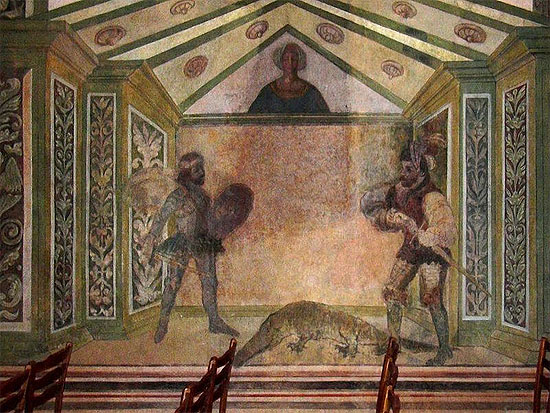
The crocodile, as we have already mentioned when speaking about the 15th-century pilgrim guides, became an emblematic animal of the Holy Land, and an almost indispensable souvenir for better-off pilgrims. No wonder that every contemporary crocodile trophy with a known origin came to Europe in this way.
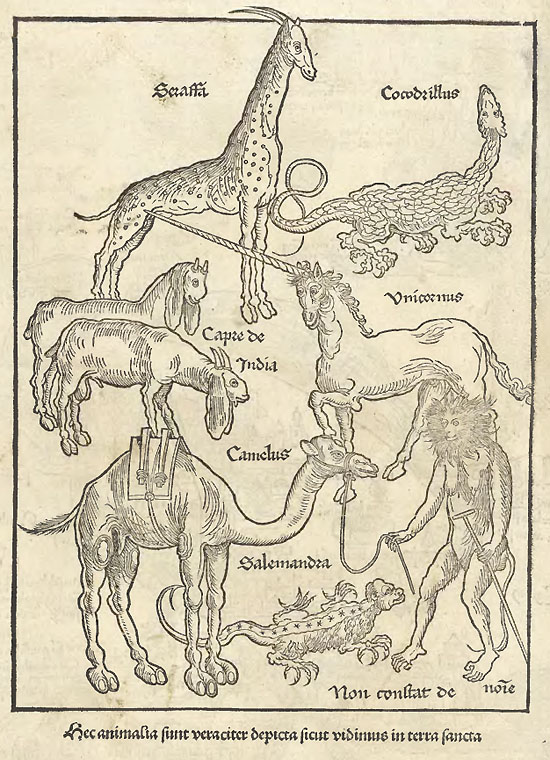 The wonders of the Holy Land from the 1486 Mainz edition of Breidenbach: These animals were
The wonders of the Holy Land from the 1486 Mainz edition of Breidenbach: These animals werefaithfully painted just as we saw them in the Holy Land. From top to bottom:
Giraffe. Crocodile. Indian goat. Unicorn. Camel. Salamander.
The name of this one is not known.
This situation gradually changed in the 17th century. The stuffed crocodiles remained favorite pieces of the cabinets de curiosités, but their emphasis shifted from their connections with the Holy Land to the a growing interest in natural history.
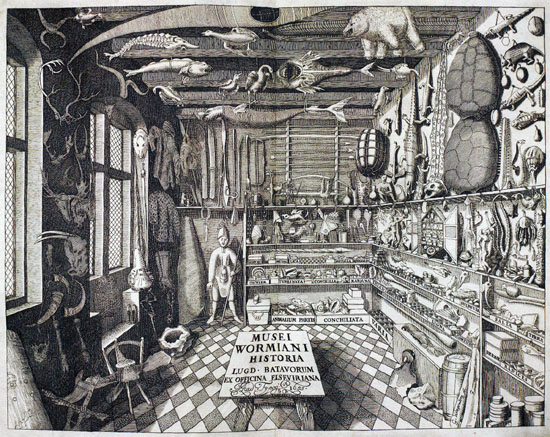
Later, with the establishment of special collections and scientific museums the hanging crocodiles were ousted from these sanctuaries of science, and gradually became the hallmark of old-fashioned antique shops and obscure scholars. As the text and illustration of Sir Terry Pratchett’s popular fantasy series Discworld presents it in an emblematic way:
Like all wizard’s workshops, the place looked as though a taxidermist had dropped his stock in a foundry and then had a fight with a maddened glassblower, braining a passing crocodile in the process (it hung from the rafters and smelt strongly of camphor).
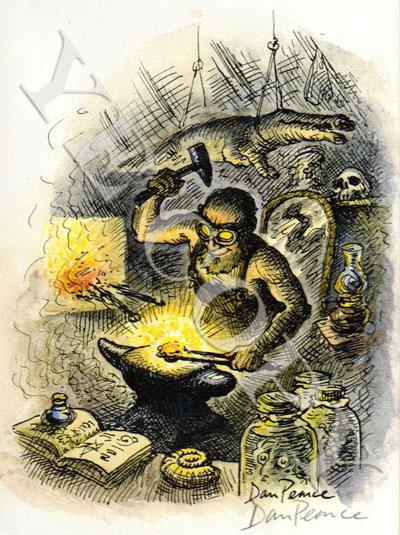
Fortunately the dragon of Brno fell not on this sad, lonely and eccentric old age. It still stands in the center of the city’s life, lending its name to the beer, football club and radio station of the city, its image to the stamp of the tourist information center of Brno, and its “copies” decorate the town hall of Brno’s Husice district and the alternative theatre Husa na provázku, Goose on a string. What is more, even the emblem of this latter shows a crocodile performing as a lion, while in the reality it is only a little sea-horse.
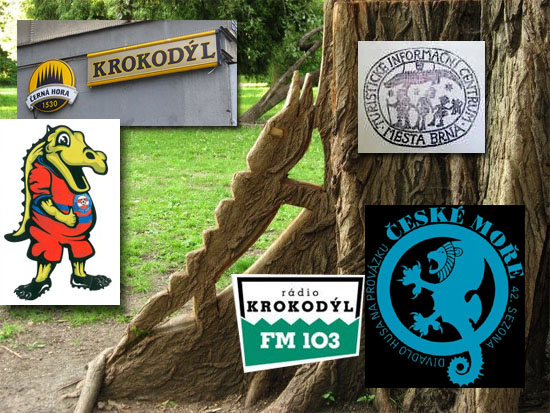
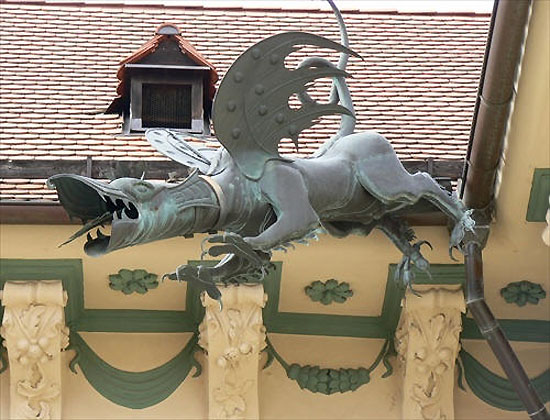
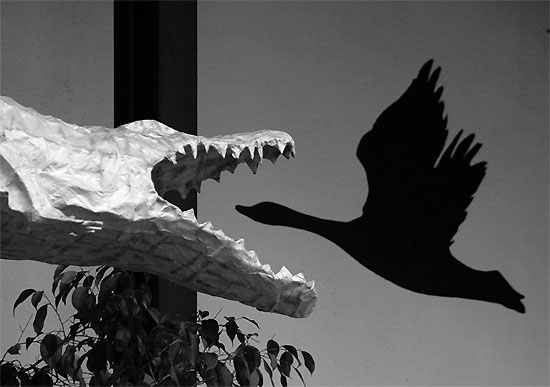
It even inspired a jewel, displayed by janina on flickr with the comment: There are some stories about Brno, and many of them are shown on this dragon. “Where, where? lemme see!” says zmetok in excitement. Homework! replies janina. As you see, we are working on it.
